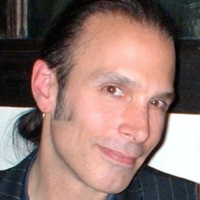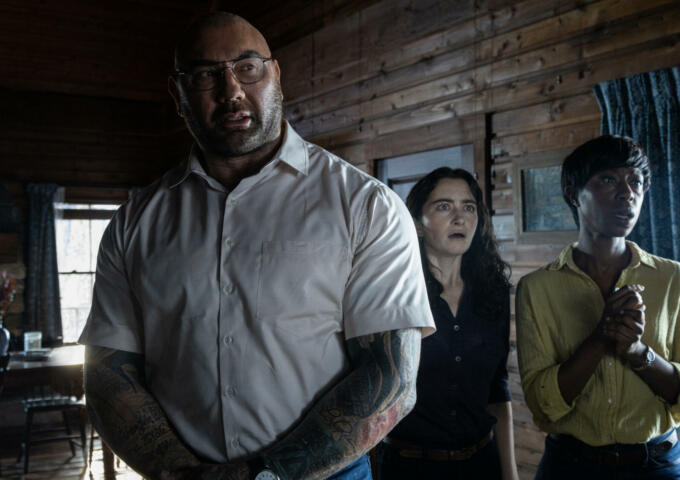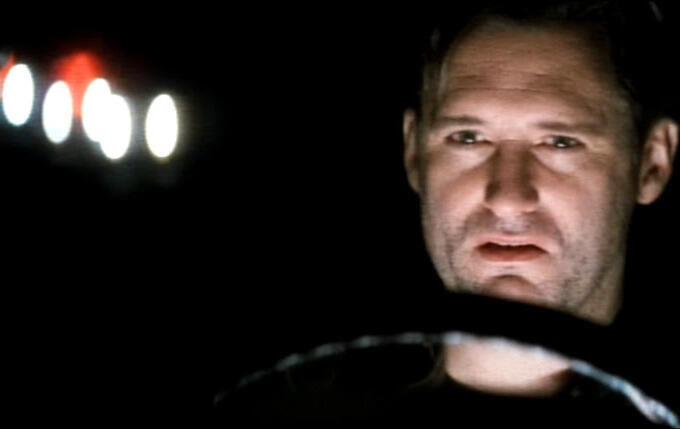During a very recent conversation about playwright Martin McDonagh’s The Pillowman with its Hedgerow Theatre Company’s cast – actors Sarah Stryker, James Kern, Daniel Romano and Stephen Patrick Smith – one consensus as to the brutal beauty of its words and images regarding a hyper-fiction writer being interrogated by over-guarded police about the gruesome content of his short stories and their uncanny connection to a series of bizarre, local child murders became clear: Martin McDonagh is the Irish Quentin Tarantino.
That’s something I’ve heard in the past: of the darkly comic, hopeful cinematic escapade The Cripple of Inishmaan, the rush to murder over a dead cat that is The Lieutenant of Inishmore and the ultra-violence of aptly-titled plays A Behanding in Spokane and Hangmen. Or even McDonagh’s bloody buddy dramadies, In Bruges and Seven Psychopaths.
The cruelly elegant language of McDonagh is always based on its rush to judgements, its mix of outrageous comedy and bountiful bloodshed, its peaking behind the curtain to the intricacies of male bonding and their wealth of pop cultural references, old, new and hueing to the region from where they’re plucked – be it McDonagh’s Irish city-scapes or Tarantino’s Los Angelino-isms – all tie each director and writer to the other.
“People say you should only write what you know. But you only write what you know because you are too fucking stupid to make anything up,” McDonagh is famed for saying. “I suppose I walk that line between comedy and cruelty because I think one illuminates the other. We’re all cruel, aren’t we? We are all extreme in one way or another at times and that’s what drama, since the Greeks, has dealt with. I hope the overall view isn’t just that though, or I’ve failed in my writing. There have to be moments when you glimpse something decent, something life-affirming even in the most twisted character. That’s where the real art lies. See, I always suspect characters who are painted as lovely, decent human beings. I would always question where the darkness lies.”
This month, that means McDonagh’s sure-to-be-Oscar nominated The Banshees of Inisherin and its tale of drinking buddies-gone-asunder played by Colin Farrell and Brendan Gleeson – one where ultimatums are given (every time one bothers the other, a left finger gets hacked off with a pair of sheep shears), one dead pet donkey is had (choking on those fingers) and a house is burned in retaliation, an arson with a surprisingly cheerful resolution. As a Searchlight Studios release, The Banshees of Inisherin is proving to be a boon to 2022 indie box office as it expanded to 895 theaters in 45 cities this weekend, crossing the $3 million mark.
Though its own fable-like bit of fun, evil, sarcasm and camaraderie is its own and McDonagh-stylized, Inisherin’s buddy comedy characters of Pádraic and Colm are tied at the hip (sterism) of Quentin Tarantino’s caustic comrades. That goes for Mr. White and Mr. Orange in Reservoir Dogs, Vincent Vega and Jules Winnfield in Pulp Fiction, Ordell Robbie and Louis Gara in Jackie Brown, and Rick Dalton and Cliff Booth in Once Upon a Time in Hollywood.
For all the rabid acts of pulpy blood-spewing gun violence, messy (unfortunate) racial slurring, Blaxploitation and Spaghetti Westernism, Tarantino, at heart – like McDonagh – has rewritten, again and again, the buddy comedy.
A large portion of what makes Tarantino’s tics, tick, can be found in Cinema Speculation, his just-published, first nonfiction book that is packed with the same over-caffeinated, much-masculinated, comic tension and know-it-all wise-acre-ism of Pulp Fiction. A book of essays dedicated to the films he loved and was influenced by from the 1970s, Cinema Speculation was inspired by the film writing of godmother of criticism, Pauline Kael, with a cover featuring a photograph of Steve McQueen with director Sam Peckinpah on the set of the 1972 action crime thriller The Getaway – one of the greatest of film muddy teamings. Whether high cinematic art or B movie fare, Tarantino has long connected the dots between obscure slasher flicks and Italian gallo, between arthaus masterworks and drive-in favorites with the intelligentsia of Goddard and Jean-Pierre Melville crossing hairs with Roger Corman and the Shaw Brothers.

“When people ask me if I went to film school I tell them, ‘No, I went to films,” Tarantino is famous of saying of his steady diet of cinematic excursions. “I steal from every single movie ever made. I love it – if my work has anything it’s that I’m taking this from this and that from that and mixing them together. If people don’t like that, then tough titty, don’t go and see it, all right? I steal from everything. Great artists steal; they don’t do homages.”
And, as for writing good vs evil, the director and writer has stated that, “In real life there are no bad guys. Everybody just has their own perspective.”
With his buddy, Roger Avary, Tarantino co-wrote Pulp Fiction and now have based a podcast on their friendship and the video rental store where both worked, Video Archives. Though Cinema Speculation is the work of one man, it teems with the celebration of seeing movies on big screens in diverse neighborhoods as a child while unifying themselves under the umbrella of the film community running through his brain. That means the joy of seeing wildly inappropriate films for a child his age with his parents, and later, with his mom’s Black boyfriend and the Blaxploitation movies of the 1970s and making intelligent, highly personalized sense – or non-sense, take your pick – of all of cinema’s offerings of the time, open the young Tarantino’s mind and eye, and mind’s eye. As for the buddies he made and the parings he fueled in Cinema Speculation, there are the wild combinations of Clint Eastwood’s Dirty Harry with his Scorpio Killer played by Andy Robinson. There is the friendship between then-young filmmakers Brian De Palma and Martin Scorsese and what Taxi Driver might have looked like had the first man who read the script (De Palma) would have done differently than the man who filmed it (save for probably integrating a Black pimp into the film, and not the jive white guy that the latter included in his drama). How a relationship between himself and a movie going, older Black guy/friend of the family was the true inspiration for Tarantino’s Django Unchained, and not the make believe rhetoric of script-flipping antisemitic Kanye West who claimed that he had the initial idea for the director’s revenge epic.
All in all, Tarantino’s vision of buddy-dom – bloody and violent as it is cruelly comic and always pop culturally astute – is based on love, connection, quirk, obsession and good old brotherhood. Just as Martin McDonagh’s is. In cinematic talk, the language of Casablanca and its final classic scene between Claude Rains and Humphrey Bogart, this could make for a beautiful friendship.






Leave a Reply